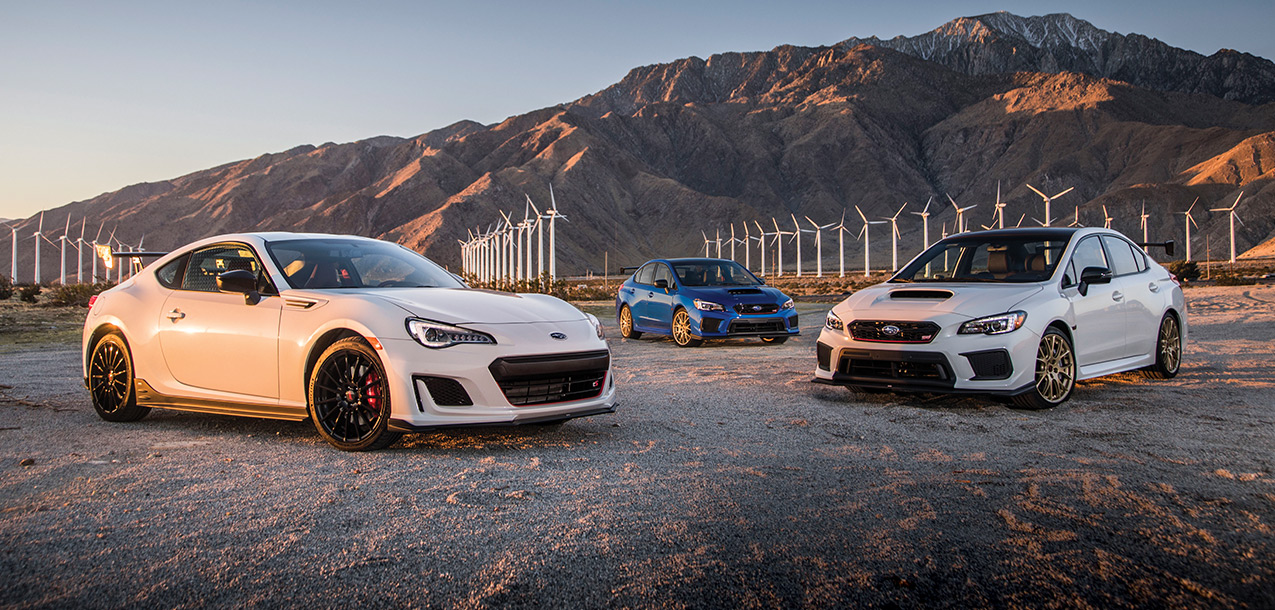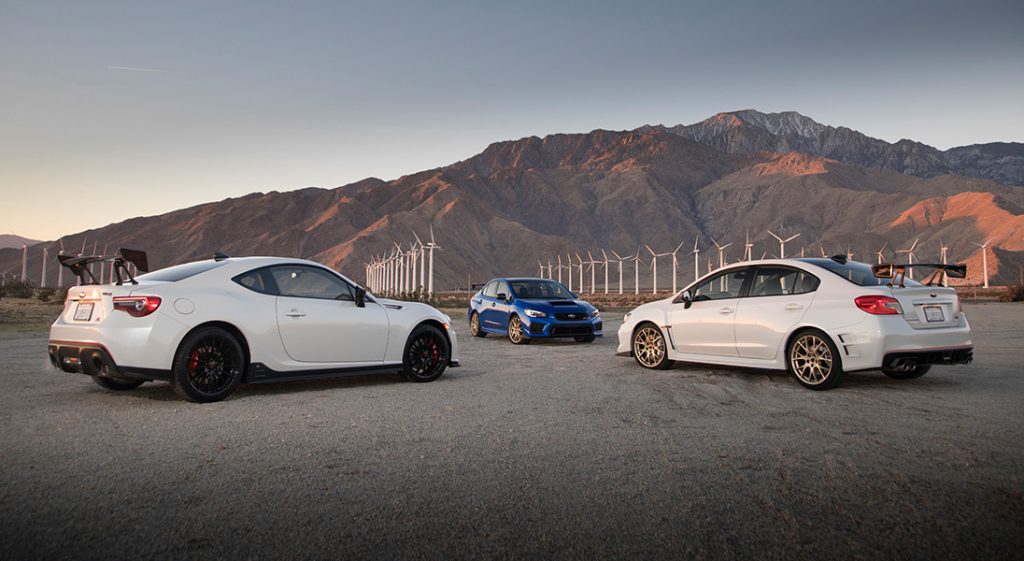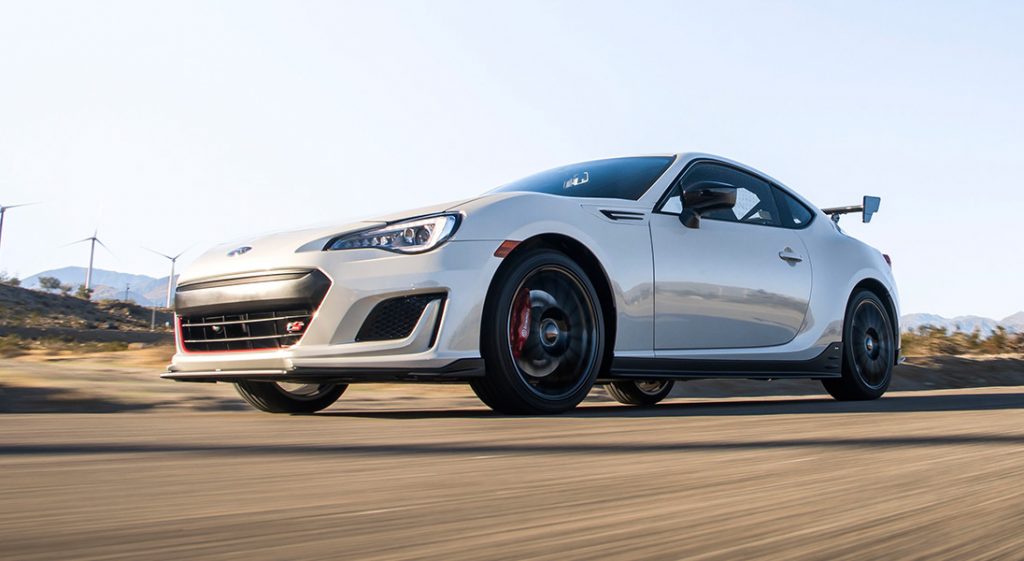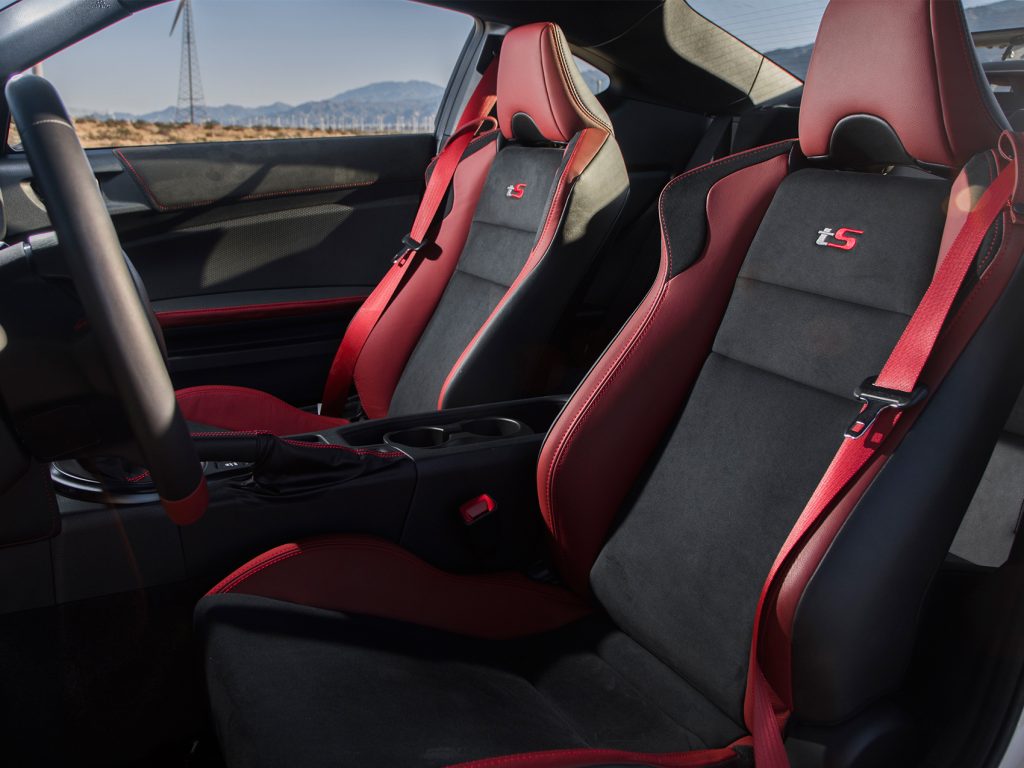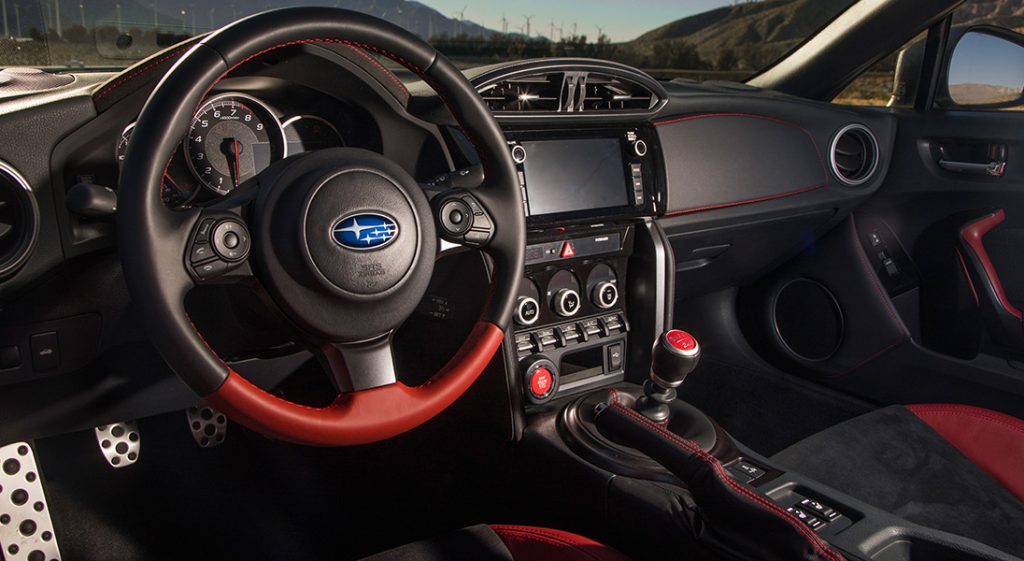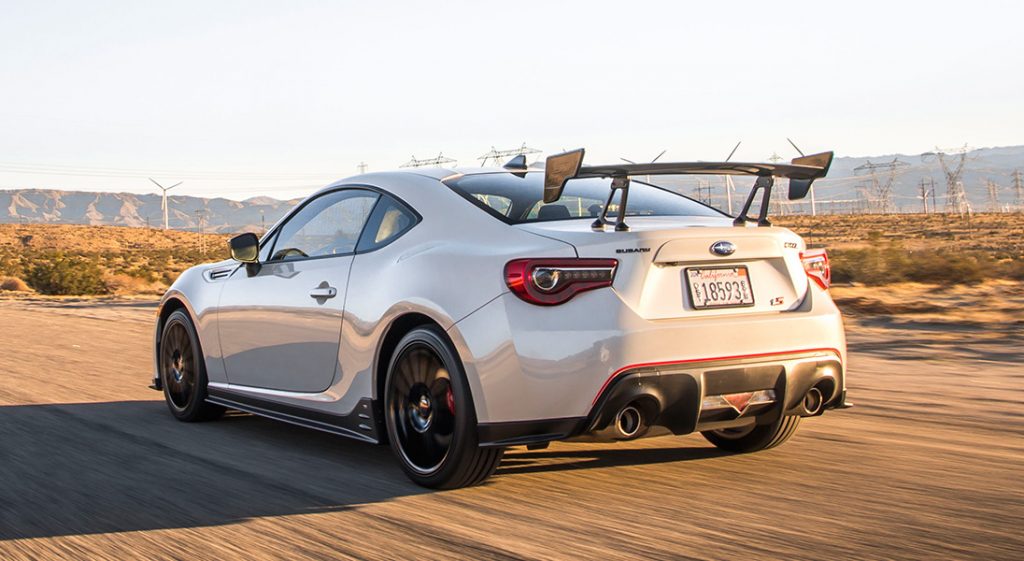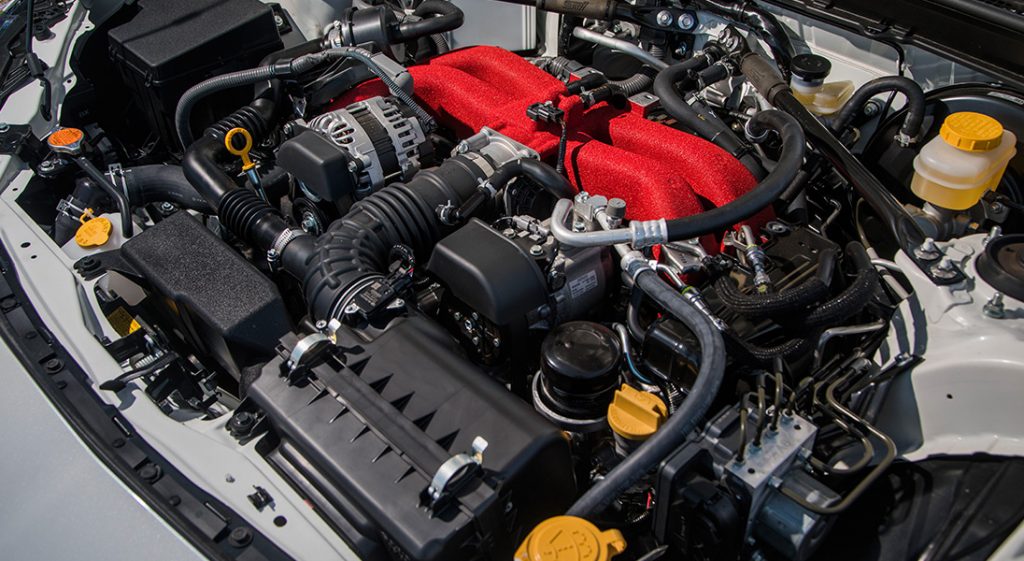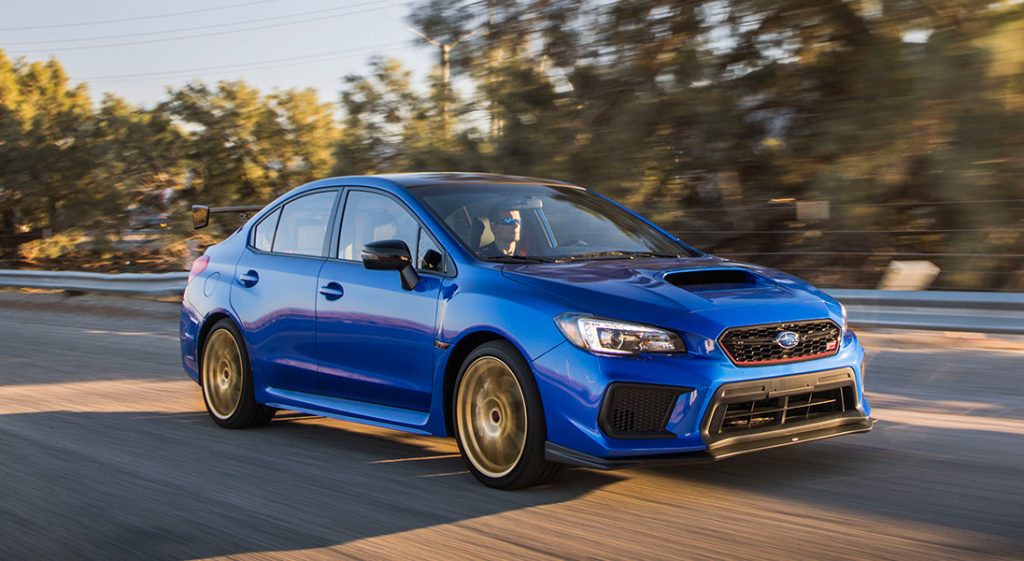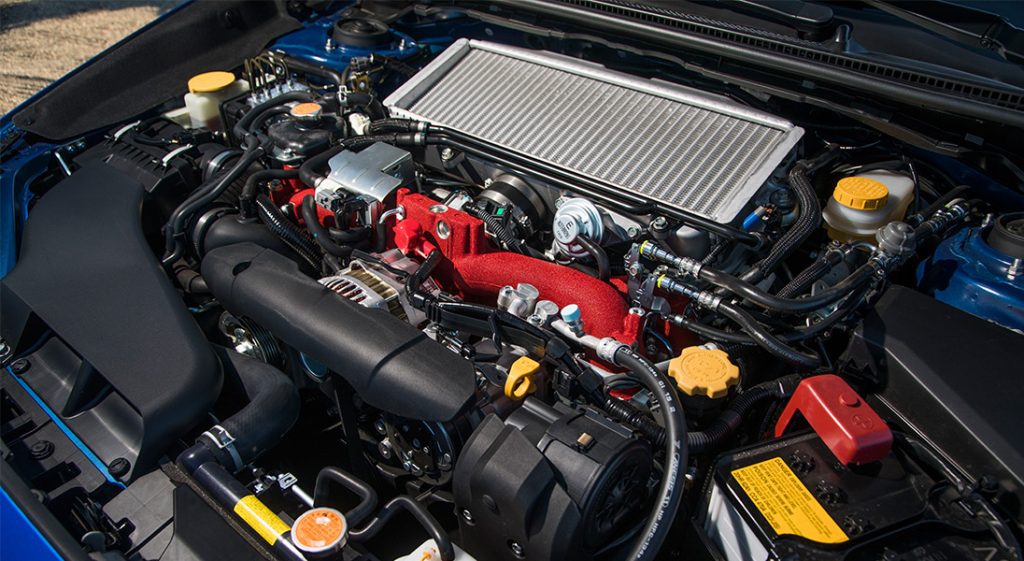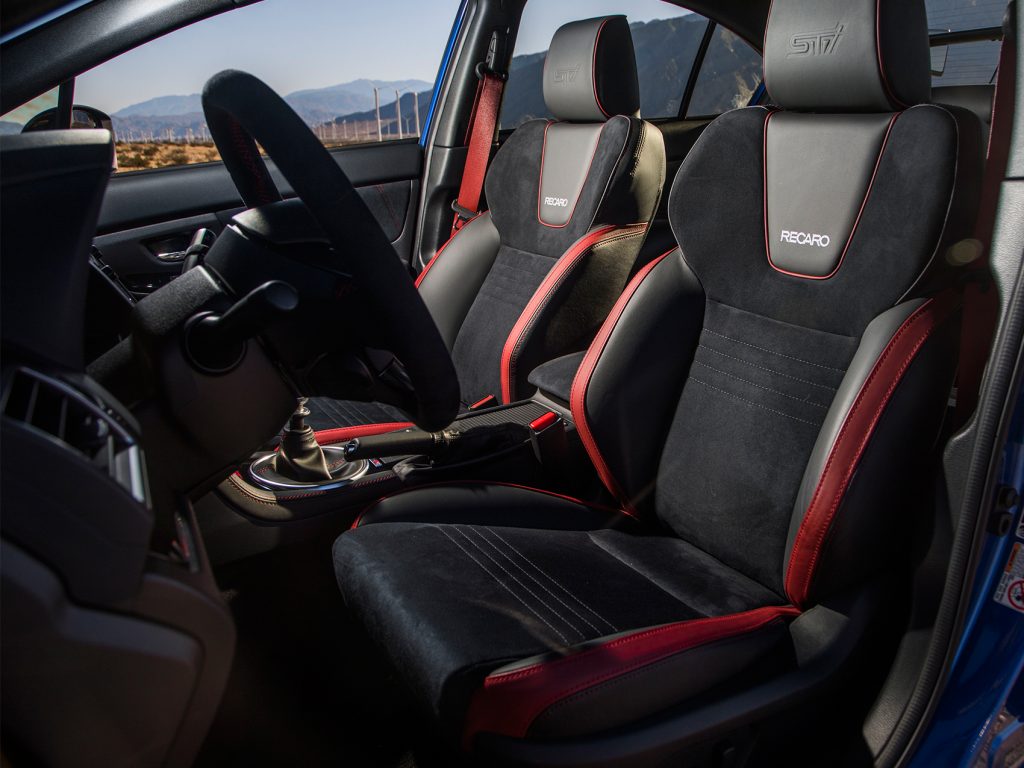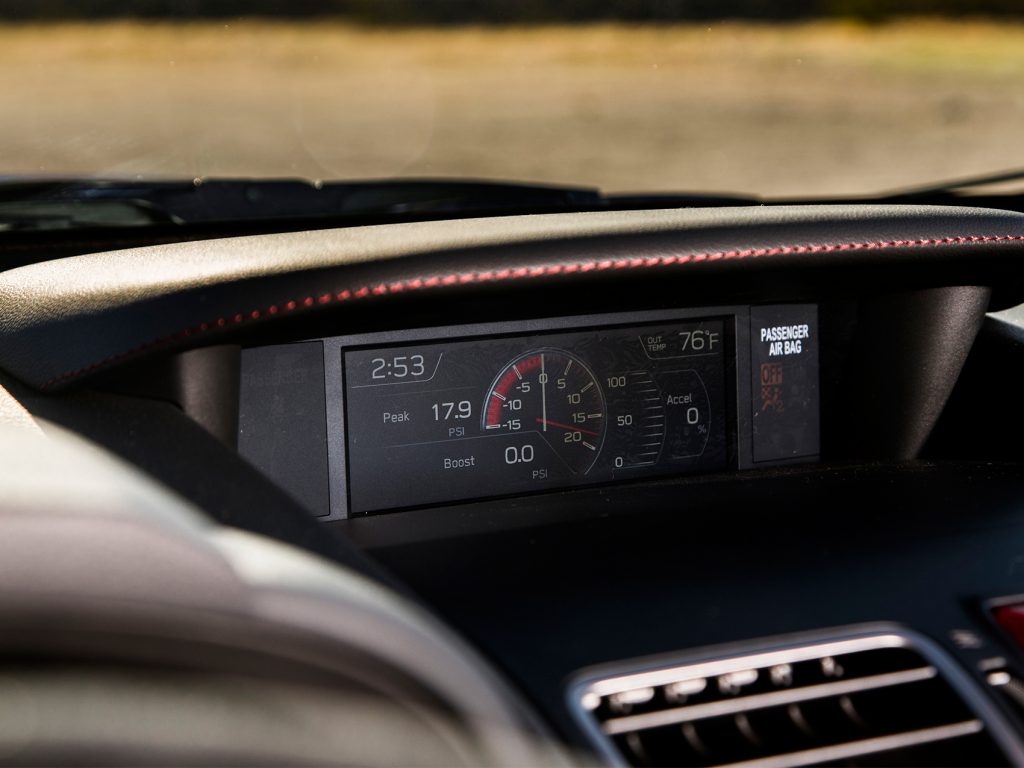One of Subaru’s latest just made one of the Nürburgring’s fastest cars list. “Fastest” in this case refers to the quickest lap made around the Nürburgring by a four-door sedan. It’s way off of any Formula One record, but even in the world of performance sedans, this is still no small feat. This accomplishment was made with Subaru and Prodrive’s latest project, the 600 horsepower WRX STI Type RA NBR. While this race car may not be fit for daily driving, Subaru developed an inspired version of the STI that is the WRX STI Type RA. In the development of this high performance sedan, Subaru didn’t want to leave its two-door sibling in the dark. The BRZ also received a special treatment taking the form of the 2018 Subaru BRZ tS, said to be the best handling BRZ yet. Here, we have two upgraded versions of Subaru’s highlight performance vehicles released alongside each other for 2018. Naturally, we wanted to know if these new releases could really have that much to offer over the base models. We took a trip down to the Palm Springs desert of Southern California to see if Subaru’s proclaimed latest and greatest truly live up to the hype.
Text by Cameron Parsons // Photos courtesy of Subaru
DSPORT Issue #192
The New Generation
Our drive through the desert enabled us to get our hands on both the 2018 WRX STI Type RA and BRZ tS on the street, twisty mountain roads, and on the race track. Given the emphasis on performance for both of these models, Subaru wanted us to experience these cars in all environments and to really stretch their legs on a closed course. Given both models’ exclusivity to just 500 units each, the opportunity to try both in this sort of setting likely won’t come up ever again. Admittedly, as excited as I was to try out both cars, it was the STI Type RA that piqued my interest. In the mindset of saving the best for last, I wanted to focus first on the BRZ tS and then graduate up to the bigger beast after.
BRZ tS – Refined, Retuned
Less than a decade since its inception, the BRZ has gone through a few revisions and updates. The most notable, however, was the Performance Package model that we reviewed in 2017. But only one year later, Subaru and STI decided to dial up the BRZ’s capabilities even more. This model includes many of the same and similar features as the Performance Package, such as Brembo performance brakes and Sachs dampers. The BRZ tS expands the upgrade list further, introducing new and improved elements to this beloved RWD track-toy.
Subaru has been upfront about the focus of the BRZ tS. The tS badge stands for “Tuned by STI,” aimed to deliver the best handling experience possible. The 2.0-liter FA20 remains naturally aspirated, but with a revised ECU mapping that increases the peak horsepower from 200 to 205, plus a small rise in the torque curve at lower RPMs. It’s likely that you won’t notice any difference in power, as the real changes lie within the chassis and handling components.
The 2018 BRZ tS’ interior features black leather with Alcantara upholstery. The cabin received red stitching and accents around the interior as a stock option. The seats are complemented with red seat belts and a frameless rear view mirror.
Corner Taker
The combination of a low center of gravity and a 2,850 lb curb weight launched the BRZ into becoming one of the most popular track day cars you’ll find. The car’s affordability and liking to customization makes it the ultimate Lego-set to swap bits and pieces on. The BRZ tS saves some of this work for you, especially with the help of Sachs performance dampers out of the factory. These STI-tuned components make for a better reacting suspension system, stiffened up to reduce body-roll and to better tackle racing surfaces. This year of the BRZ introduced enhanced chassis rigidity with the help of a thickened rear bulkhead frame, with the tS model employing a flexible front strut tower brace (V-bar) and flexible draw stiffeners (sub-frame and chassis bracing). These components improve the car’s agility and responsiveness, especially with the front strut tower braces tying the front wheels together for consistent alignment angles when driving around corners. The flexibility of these braces take on some of the roughness of the road, allowing them to stiffen up the chassis without sacrificing comfort.
From the outside of the car, you can spot Brembo brake calipers behind all four 18-inch STI wheels. This larger wheel diameter is a first for the BRZ. Arguably the biggest difference in handling comes from the rubber wrapping each of these lightweight wheels. The highly favored Michelin Pilot Sport 4 tires stick the BRZ to the ground in a 215/40R18 size. The outside of the car is decorated with both attractive and effective aero components. STI front, rear, and side under-spoilers reduce air pressure underneath the car in an effort to improve traction and stability. On the topside, an aggressive-looking, adjustable STI rear carbon fiber wing sits atop the trunk to create additional downforce.
tS on Track
We had the opportunity to test the BRZ tS in both an autocross setting, as well as on The Thermal Club’s 1.4-mile Desert Circuit; a segment of track cut-out of the facility’s 5.1-mile overall circuit. Although this shorter course doesn’t quite match the length of other popularly raced tracks, it offers its share of long straights, high speed bends, and extremely tight turns. On track, the low weight of the BRZ tS becomes very apparent. The car feels nimble, out-brakes most other cars, and inspires confidence that encourages the driver to push it harder and harder. One of the most notable characteristics is the level of responsiveness that the car offers over the base BRZ. Although very stable in a straight line, the steering wheel gives extremely detailed feedback from the road surface. This provides a strong sense of predictability, so that any driver would feel like they know exactly how the car is going to respond to varying levels of steering input. As soon as you point the wheel into a corner, the front-end digs into the ground and sends the car to the apex.
The common complaint of power struggles hasn’t gone anywhere. The BRZ tS is a blast on track, but you might find yourself getting a little bored on the straightaways by the time you reach for fourth gear. On the other hand, the BRZ tS shines on the autocross. The course we drove consisted of sharp right-angle corners, a large complete circle, a short slalom, and a few short straightaways interrupted by hard braking zones. This only allowed us to take the car up to second gear, placing focus completely on throttle, braking, steering, and weight management. The BRZ tS loved the tight twists and turns, especially when taken sideways. Due to its excellent balance and improved responsiveness, any driver can easily send the front end into the corners, allow the rear to drift out, anticipate the slide, and correct as needed. Most might say this is easier said than done, but the BRZ tS makes it as easy as it sounds.
WRX STI Type RA – All About Records
After getting our kicks in the BRZ tS, it came time to check out the WRX STI Type RA. On the surface, you might expect this car to perform and drive just like the WRX STI. It’s front engine, AWD, four-doors, and features the same turbocharged EJ257 2.5-liter flat-four that’s been in these cars for decades. Yet it carries the extra special “Type RA” badge, referring to “Record Attempt.” That’s because this model saw updates made to the engine, suspension, and body, inspired by the record-breaking Type RA NBR. The Type RA NBR, prepared by the experts at Prodrive, achieved the quickest lap recorded around the Nürburgring by a sedan. With a time of 6:57.5, the Type RA ran a lap only a half-second slower than the Porsche 918’s time. As much as we’d like to get our hands on this 600 horsepower monster, the 2018 STI Type RA gives us a small taste of what a record breaking car is made of.
Just like the BRZ tS, the Type RA is granted with additional performance features over the base model and comes in a very limited quantity of only 500. Also similar to the updates of the BRZ, most of the upgrades are centered on handling performance over straight-line power. The result is still a highly improved track experience over the base STI. This is even better news for United States’ residents, as this is the first year that any model Type RA becomes available on our end of the globe.
For a Few HP More
Although the Type RA utilizes the same EJ257 power plant as the base model STI, Subaru dressed it up for this model with a few updates. This includes sodium-filled exhaust valves, reinforced pistons, a revised intake, and a careful ECU remapping. On the exhaust end, Subaru equipped larger diameter piping to reduce back pressure by as much as 50 percent. This equates to a five horsepower increase to bring the total up to 310, plus an earlier torque gain at lower RPMs. Add a lower ratio third gear and you have a car that may not be significantly faster down the quarter mile, but much better equipped to accelerate out of turns on a race track.
Trimming the Fat
The STI Type RA benefits from Bilstein STI Sport Suspension and an even more capable Brembo Performance Brake System, but some of the most notable changes come in the form of weight reduction. At first glance, you’ll see that there’s a lot more carbon in this package. Its carbon roof improves the vehicle body strength, while also dropping eight pounds from the car and lowering the center of gravity by two millimeters. The Type RA also features a carbon fiber adjustable rear wing, giving you the option to increase downforce when at the track or to reduce drag for the freeway. An STI front under-spoiler and rear-bumper side-scoops divert air to reduce drag and lift, helping suck the car to the ground. These carbon components, a set of forged BBS wheels with Yokohama performance tires, the removal of the spare tire, and some other changes led to a total reduction of 68 pounds from the base STI model. These changes in appearance and performance, plus the addition of an Ultrasuede-wrapped steering wheel, show that the Type RA begs to be driven on track.
The 2018 WRX STI Type RA comes with Recaro performance design front seats with red bolsters and stitching all around the cabin, as well as an embossed STI logo on the head restraints. The steering wheel is wrapped in Ultrasuede material for a comfortable grip.
STI Type RA on Track
After learning the Desert Course of The Thermal Club with the BRZ tS, I felt ready to take the wheel of the STI Type RA. This time, the turbocharged-pull of the 310 horsepower motor made the straightaways every bit as fun as the corners. Gear changes are quick and smooth, thanks to the STI short shifter. Under braking, the Type RA is composed and confident, making the 3,400-pound car feel much lighter than it actually is. The biggest surprise, however, is the improvement in handling.
While 3,400 pounds isn’t particularly heavy compared to other modern cars, it is far from what I’d call “lightweight.” Consider also that AWD platforms rarely fare well in corners due to understeer, so my expectations in cornering weren’t very high. But things aren’t always as they seem, as the Type RA breaks the mold of an AWD sedan’s handling capabilities. The car darts into corners with a gentle suggestion put into the steering. Even better, the car rewards you for utilizing trail-braking. Inputting a ton of brake pressure in a straight line, then gently releasing off as you add angle into the steering wheel starts the car rotating into a corner. I was never once forced to counter-steer the car on entry, as the rotation angle and speed of the car consistently felt just right. It still demands some patience on corner exit, as simply flooring the throttle would plow the car straight off the track, but this is common to any FWD and AWD platform. If you remain smooth on your inputs and gradually dial up the throttle on the way out of any given turn, however, the Type RA makes it well worth it in terms of speed and lap times.
Many of the driving characteristics of the Type RA on track are just right. It’s responsive, but you’d have to drive like a moron to put it into a spin. It delivers enough power to feel exciting, but not enough to really put you in any danger. The brakes are strong and effective, while providing a great level of control and modulation instead of acting like an on/off switch. There are a lot of big egos in the automotive world, and most are too proud to admit when a car is too fast or dangerous for them. The Type RA inserts itself right at that point, where it’s fun and challenging, but never excessive or dangerous in anyone’s hands.
Quality, Not Quantity
So far, the BRZ tS and STI Type RA may sound pretty groundbreaking to you, but there’s always a catch. These rare models are available in a limited supply of just 500 examples of each. There’s a formula here with upgrade model cars and minimal availability, and the result is reflected in the price. The BRZ tS carries an MSRP of $33,495 and the STI Type RA has an MSRP of $48,995. These prices show an $8,000 to $12,000 increase in price over the base models currently available. This is where you must weigh your options. For these price increases, you can dig into the aftermarket catalog and make the BRZ or STI quicker on track than these limited-edition versions. However, you won’t have the fit and finish of Subaru’s factory upgrades, and there’s something special about flaunting the tS and STI badges. There’s always a cost associated with being the member of an exclusive club, and in this case the club features some fantastic upgrades for driver enjoyment and seriously good-looks.


